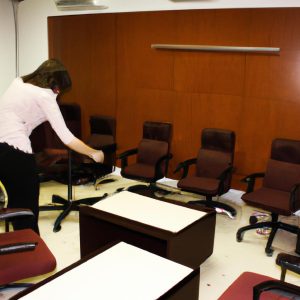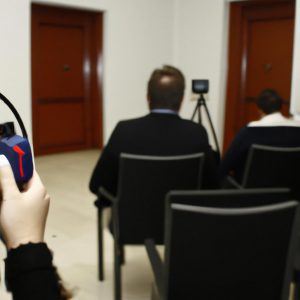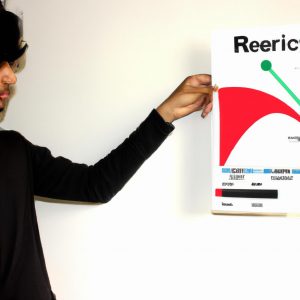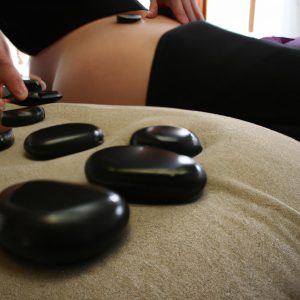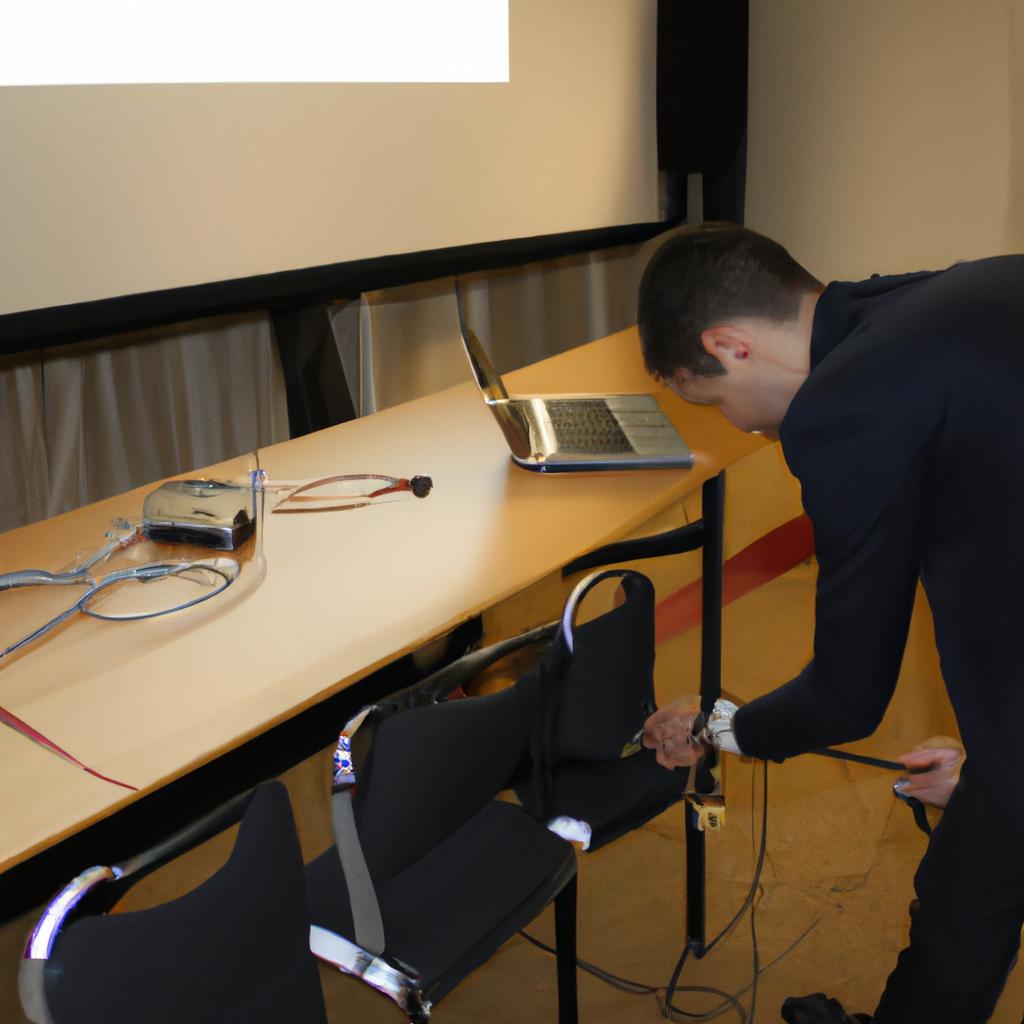
Conference rooms in hotels and restaurants play a crucial role in hosting various events, ranging from business conferences to social gatherings. These spaces require the right equipment to ensure seamless communication and effective presentation delivery. Without proper audiovisual aids and furniture, these conference rooms may fail to meet the needs of organizers and participants alike. For instance, imagine a scenario where a multinational corporation plans to hold an important shareholders’ meeting at a prestigious hotel’s conference room. However, upon arrival, they find outdated audio systems, uncomfortable seating arrangements, and insufficient lighting that hinder their ability to convey critical information effectively.
To address such issues and provide guidance for hotel and restaurant owners looking to optimize their conference rooms, this comprehensive guide explores the essential equipment required for these spaces. By examining each aspect of conference room setup – including audiovisual technology, seating arrangement options, lighting solutions, and connectivity tools – this article aims to equip readers with valuable insights on how to create high-quality environments that cater to diverse event requirements. From state-of-the-art projectors and sound systems capable of delivering crystal-clear presentations to adaptable furniture designs promoting comfort during long-duration meetings, selecting the right equipment is paramount in ensuring customer satisfaction and overall success in organizing events within hospitality establishments.
Choosing the Right Audio Visual Equipment
Imagine attending a conference in a hotel and restaurant conference room. As you enter, you are immediately captivated by the high-quality audio visual setup that enhances your overall experience. The crisp sound system fills the room, ensuring every word from the speaker is heard clearly. The large projection screen displays vibrant visuals, making it easy to follow along with presentations. This example illustrates the importance of choosing the right audio visual equipment for conference rooms.
To ensure a successful event, it is crucial to select audio visual equipment that meets the specific needs of your hotel or restaurant conference room. Here are some key factors to consider:
-
Room Size: Take into account the size of your conference room when selecting audio visual equipment. Larger spaces may require more powerful speakers and projectors to adequately fill the area with sound and visuals.
-
Connectivity Options: It is essential to have versatile connectivity options available in order to accommodate different devices and media formats. Consider providing various input ports such as HDMI, VGA, and USB connections for seamless integration.
-
User-Friendly Interface: Opt for user-friendly audio visual equipment that can be easily operated by staff members without extensive technical knowledge. Intuitive controls and clear instructions will help ensure smooth operation during events.
-
Maintenance and Support: Choose reliable brands that offer good customer support and maintenance services. Regular maintenance checks should be conducted to prevent any unexpected technical failures during important conferences or meetings.
In addition to these considerations, it is also beneficial to compare features, read reviews, and consult experts in the field before making a final decision on which audio visual equipment best suits your hotel or restaurant’s conference rooms.
Moving forward into discussing Essential Furniture and Seating Options for these spaces…
Essential Furniture and Seating Options
In today’s fast-paced business world, audio visual equipment plays a crucial role in creating impactful presentations and engaging conferences. To ensure that your hotel or restaurant conference rooms are equipped with the right tools to meet the needs of modern professionals, careful consideration must be given when selecting audio visual equipment.
For instance, imagine a scenario where a renowned technology company is hosting their annual conference at your hotel. The success of this event depends not only on the quality of speakers and content but also on the seamless integration of audio visual equipment throughout the conference rooms. From crisp sound systems amplifying keynote speeches to high-resolution projectors displaying visually appealing slideshows, every element must work together harmoniously to leave a lasting impression on attendees.
When choosing the right audio visual equipment for your hotel or restaurant conference rooms, keep in mind these key factors:
- Versatility: Opt for equipment that can accommodate various types of events, from large-scale conferences to intimate meetings.
- Ease of Use: Select user-friendly devices so both staff and presenters can effortlessly operate them without any technical difficulties.
- Scalability: Consider future growth and technological advancements by investing in expandable systems that can adapt to evolving industry standards.
- Technical Support: Ensure that reliable technical support is readily available to troubleshoot any issues promptly, minimizing disruptions during important events.
To further illustrate the importance of selecting appropriate audio visual equipment, consider the following example showcasing its impact on an international business summit held at one hotel:
| Challenge | Solution | Outcome | |
|---|---|---|---|
| 1 | Poor sound quality during keynote speeches | Invested in advanced sound reinforcement system | Enhanced clarity resulted in improved audience engagement |
| 2 | Technical glitches during video conferencing sessions | Upgraded video conferencing software | Seamless communication between international participants |
| 3 | Inadequate projector brightness for large conference rooms | Installed high-lumen projectors | Crystal-clear image projection even in well-lit environments |
| 4 | Lack of compatibility with external devices | Implemented a universal connectivity solution | Effortless integration with various multimedia sources |
As we can see from the example above, making informed decisions when selecting audio visual equipment is crucial to ensuring successful events. By considering factors like versatility, ease of use, scalability, and technical support, you can create an immersive experience that leaves a positive impact on your guests.
Transitioning into the next section about “Lighting and Ambiance,” it is essential to create an atmosphere that complements the audio visual setup. The right lighting can enhance presentations, evoke emotions, and set the tone for different types of events. Let’s explore how to effectively utilize lighting techniques to create a captivating ambiance in hotel and restaurant conference rooms.
Lighting and Ambiance
Equipment for Hotel and Restaurant Conference Rooms: A Comprehensive Guide
Essential Furniture and Seating Options have been discussed in detail, ensuring a comfortable and functional space for attendees. Now, let’s shift our focus to another crucial aspect of conference room design – Lighting and Ambiance.
To illustrate the importance of lighting in creating an inviting atmosphere, consider this hypothetical case study: Imagine a hotel hosting a high-profile business conference. The organizers opt for harsh fluorescent lighting that gives off a cold and clinical vibe. As attendees enter the conference room, they immediately feel uneasy and uninspired. In contrast, imagine another scenario where soft, warm lighting is used along with natural elements like plants and artwork strategically placed around the room. This creates a welcoming ambiance that encourages engagement and collaboration among participants.
Here are some key factors to consider when it comes to lighting and ambiance:
- Natural Light: Utilize windows or skylights to maximize natural light during daylight hours.
- Adjustable Lighting: Install dimmers or adjustable fixtures to allow for flexibility in setting the mood based on different event requirements.
- Task Lighting: Ensure proper task lighting options like reading lamps or individual desk lights are available for each participant.
- Décor Elements: Incorporate decorative elements such as wall sconces, chandeliers, or LED strip lights that complement the overall theme while enhancing the visual appeal of the space.
| Aspect | Benefits |
|---|---|
| Natural Light | Enhances mood and productivity; reduces eyestrain |
| Adjustable Lighting | Allows customization based on event needs; adds versatility |
| Task Lighting | Ensures optimal visibility; caters to individual preferences |
| Décor Elements | Adds aesthetic appeal; contributes to overall ambiance |
By carefully considering these aspects, you can create an environment conducive to productive discussions and networking opportunities within your conference rooms.
As we transition into the next section about Effective Soundproofing Solutions, keep in mind that the successful implementation of these techniques will not only enhance the overall experience for conference attendees but also reflect positively on your establishment’s reputation as a premier venue for such events.
Effective Soundproofing Solutions
Imagine a scenario where a hotel conference room is being used for an important business meeting. The attendees are engrossed in discussing crucial matters, but suddenly their conversation is interrupted by the noise coming from an adjacent event happening simultaneously. This disruption not only affects the concentration of those present but also reflects poorly on the establishment’s commitment to providing a suitable environment for conferences. To avoid such situations and ensure optimal sound quality within conference rooms, effective soundproofing solutions must be implemented.
One of the key elements in achieving successful soundproofing is understanding the sources of external noise that can infiltrate the conference room. These may include traffic sounds, HVAC systems, neighboring events or facilities, and even reverberations caused by footsteps outside the room. By identifying these potential sources, appropriate measures can be taken to mitigate their impact.
To effectively reduce unwanted noise infiltration into conference rooms, consider implementing the following strategies:
- Acoustical Panels: Installing acoustical panels on walls and ceilings helps absorb excessive noise and minimize echoes within the space.
- Sound Absorbing Curtains: Utilizing heavy curtains with sound-absorbent properties on windows and doors can significantly block external noises.
- Sealing Gaps: Ensuring there are no gaps around windows, doors, or ventilation ducts prevents sound leakage.
- Double Glazing Windows: Replacing single-pane windows with double-glazed ones creates an additional barrier against exterior noise.
Implementing these solutions will not only enhance overall acoustic performance but also create a more pleasant ambiance conducive to productive discussions during conferences.
In addition to these ideas, it is useful to understand how various materials affect sound transmission levels. Consider this comparison table showcasing different materials commonly used in interior design and their corresponding sound insulation ratings:
| Material | Sound Insulation Rating |
|---|---|
| Concrete | Excellent |
| Glass | Poor |
| Wood | Moderate |
| Acoustic Foam | Good |
As evident from the table, choosing appropriate materials can significantly impact soundproofing effectiveness. By incorporating these insights into the design and construction phases of conference rooms, noise disturbances can be minimized, ensuring an optimal environment for productive meetings.
Transitioning to the next section on Smart Technology Integration, it is essential to consider how modern advancements in audiovisual systems can complement effective soundproofing efforts.
Smart Technology Integration
Having discussed effective soundproofing solutions, we now turn our attention to the integration of smart technology in hotel and restaurant conference rooms. This aspect plays a crucial role in enhancing productivity and creating a seamless experience for both organizers and attendees.
To illustrate the impact of smart technology integration, let us consider a hypothetical case study involving a high-profile international business conference. The event takes place at an upscale hotel with state-of-the-art conference facilities. By leveraging smart technology, such as interactive displays, automated scheduling systems, and real-time language translation tools, the conference seamlessly accommodates participants from diverse backgrounds. Attendees are able to engage effortlessly with presentations and panel discussions through touch-screen interfaces while receiving instant translations tailored to their preferred language settings.
The benefits of incorporating smart technology into hotel and restaurant conference rooms extend beyond improved communication capabilities. Here are some key advantages:
-
Streamlined Operations:
- Automated check-in systems reduce wait times.
- Real-time data analytics enable efficient resource allocation.
- Interactive room booking platforms enhance convenience.
-
Enhanced Audiovisual Experiences:
- High-resolution projectors display crisp visuals.
- Surround sound systems create immersive audio experiences.
- Wireless connectivity allows seamless content sharing.
-
Increased Efficiency:
- Smart lighting controls optimize energy usage.
- Motion sensors activate power-saving modes when rooms are unoccupied.
- Centralized control panels simplify equipment management.
Table: Key Advantages of Smart Technology Integration
| Advantage | Description |
|---|---|
| Streamlined Operations | Automated check-ins, real-time data analytics, and convenient bookings |
| Enhanced Audiovisual | High-resolution projectors, surround sound systems, wireless connectivity |
| Increased Efficiency | Smart lighting controls, motion sensors, centralized control panels |
By embracing smart technology integration in hotel and restaurant conference rooms, businesses can elevate the overall experience for event organizers and attendees. The seamless operation of various systems and enhanced audiovisual capabilities contribute to a professional atmosphere conducive to productive meetings and engaging presentations.
As we delve further into equipping conference rooms with cutting-edge technology, our next section explores the essential catering and refreshment equipment required for successful events.
Catering and Refreshment Equipment
Building upon the seamless integration of smart technology in conference rooms, it is equally important to consider the catering and refreshment equipment available. By providing exceptional dining experiences during conferences, hotels and restaurants can enhance guest satisfaction and create a memorable event environment. This section will explore essential equipment options that optimize efficiency while ensuring an enjoyable culinary experience for attendees.
Section:
To illustrate the significance of well-equipped catering and refreshment facilities, let us consider a hypothetical scenario where a hotel hosts a corporate conference for a multinational company. As participants from various countries gather at this event, having versatile equipment becomes crucial in accommodating diverse dietary preferences and cultural requirements.
Firstly, hotels should invest in high-quality food preparation stations equipped with advanced features like temperature control systems and ample storage capacity. These stations enable chefs to efficiently prepare large quantities of meals without compromising on taste or presentation. Additionally, incorporating state-of-the-art cooking appliances such as induction cooktops can ensure precise heat distribution while reducing energy consumption.
In order to provide optimal service throughout the conference, establishments must also prioritize beverage dispensing solutions that cater to different preferences. For instance, investing in coffee machines capable of brewing multiple types of coffee simultaneously ensures guests have access to their preferred choices promptly. Furthermore, incorporating self-service drink stations equipped with interactive displays offering customized beverage options encourages active participation among attendees.
- Streamlined food preparation process saves time and reduces stress levels.
- Versatile cooking appliances accommodate diverse culinary needs.
- Efficient beverage dispensers minimize waiting times for drinks.
- Interactive displays promote engagement among attendees.
| Equipment | Features | Benefits |
|---|---|---|
| Food Preparation Stations | Temperature control systemsAmple storage capacity | Time-efficient meal preparationOptimal food preservation |
| Induction Cooktops | Precise heat distributionEnergy efficiency | Consistent and uniform cooking resultsSustainable operation |
| Coffee Machines | Multiple brewing options simultaneouslyPrompt service | Catering to diverse coffee preferencesNo delays in beverage provision |
In conclusion, the integration of efficient catering and refreshment equipment is essential for creating a pleasant dining experience during conferences. By investing in versatile food preparation stations and advanced cooking appliances, hotels and restaurants can accommodate various dietary needs efficiently. Similarly, incorporating beverage dispensers that cater to different preferences ensures prompt service while interactive displays enhance attendee engagement. Ultimately, these considerations contribute to guest satisfaction and make conference events more enjoyable and memorable for all participants.
